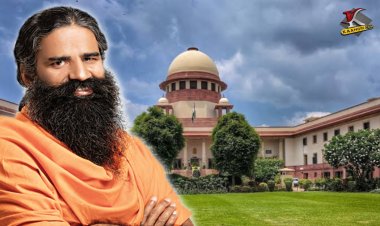Deployment of Teachers is Voilation of Fundamental Rights.

By Ayaz Mughal
Teachers are the backbone of any education system. Their presence in classrooms is vital for students’ learning and growth.
But what happens when teachers are pulled out of classrooms and sent to work in government offices? What happens to the students who wait every day for their teacher but are instead left with no one to guide them? Isn’t this a silent but serious violation of a child’s fundamental right to education?
This is not just a theoretical concern, it is a harsh reality in Jammu and Kashmir. Teachers are frequently deputed to offices of the Director School Education, Deputy Commissioners, Chief Education Officers (CEOs), Zonal Education Officers (ZEOs), and District Institutes of Education and Training (DIETs) to perform clerical, administrative, or supervisory duties. While these roles may be important in the broader education system, they come at the cost of classroom teaching, where a teacher’s presence is most needed.
The Right of Children to Free and Compulsory Education Act, 2009 (RTE Act) guarantees every child between the age of 6 to 14 years the right to free and quality education. Section 27 of this law explicitly states that teachers should not be burdened with non-educational tasks, except for duties related to elections, disaster relief, and the census.
But, the ground reality is different. In many government schools, especially in rural and remote areas, teacher shortages are a major issue. Schools often have just one or two teachers managing multiple classes, subjects, and administrative work. Deputing even one teacher to a non-teaching role creates a vacuum in the school, directly affecting the quality of education.
Several reports suggest that many teachers are assigned to offices for data entry, paperwork and other clerical responsibilities. These duties, while important, do not require the expertise of a trained educator. Due to a lack of administrative staff, teachers are often used as substitutes for clerks or assistants.
Children in government schools, especially in rural and economically weaker areas, rely solely on their teachers for education. Unlike their peers in private schools, they do not have access to tuition classes or online learning platforms.
Official data reveals that 1,330 schools in Jammu and Kashmir are currently operating with just one teacher, severely limiting the learning opportunities for over 30 thousands students enrolled in these institutions. These single-teacher schools are mainly located in rural and remote areas, where access to quality education is already a major challenge. When such shortages already exist, diverting teachers to non-teaching roles further cripples the system.
In many cases, the lone teacher is responsible for teaching multiple grades and subjects, making it nearly impossible to provide focused attention to students. This results in poor learning outcomes, with students struggling to develop fundamental literacy and numeracy skills.
Currently, the Pupil-Teacher Ratio (PTR) in government schools across J&K stands at 1:16, which is below the national average of 1:30. On the surface, this may seem favorable, but in reality, the uneven distribution of teachers paints a different picture. Some schools remain severely understaffed, while others are overstaffed despite low student numbers, leading to inefficiencies in the system.
Moreover, District Institutes of Education and Training (DIETs) were established to improve the quality of teacher education and provide ongoing support. However, instead of serving as training hubs, many DIETs in J&K have turned into administrative centers, where deputed teachers handle office tasks instead of conducting training sessions.
This defeats the very purpose of DIETs and weakens the continuous professional development of teachers. If DIETs functioned effectively, they could play a crucial role in enhancing teaching methodologies and improving student outcomes.
Some may argue that deputing teachers to administrative roles helps in policy implementation and ensures better management of education programs. However, this does not justify removing teachers from classrooms.
To ensure that every child receives quality education, the government must take several critical steps. First and foremost, appointing adequate administrative staff is essential. Instead of diverting teachers from classrooms to perform clerical and supervisory duties, the government should recruit dedicated clerks and administrative officers for education departments. This would allow teachers to remain focused on their primary role, reaching and guiding students.
Moreover, it is crucial to enforce the Right to Education (RTE) Act guidelines strictly. Section 27 of the RTE Act explicitly states that teachers should not be assigned non-educational tasks, except for duties related to elections, disaster relief, and census work. Ensuring that this law is followed in letter and spirit will prevent the widespread practice of teacher deputations and ensure that schools are not left understaffed.
Moreover, conducting regular audits of teacher deployment should become a mandatory practice. The education department must carry out annual reviews to assess whether teachers are being utilized effectively in classrooms. Any violations of teacher allocation policies should be met with strict accountability measures to prevent further misuse of educators for administrative purposes.
Education is a powerful tool of social transformation, but for it to work, the basics must be in place. A teacher in a classroom is one of those basic necessities.
We must not deprive our children of their right to quality education by misusing the very professionals who are meant to provide it.
It’s time we ask a simple but powerful question:
Can a nation truly claim to protect the Right to Education if its teachers are kept away from their classrooms?
_______________________________
The Author can be. Reached at editorkaangri@gmail.com and WhatsApp: 9858460733










